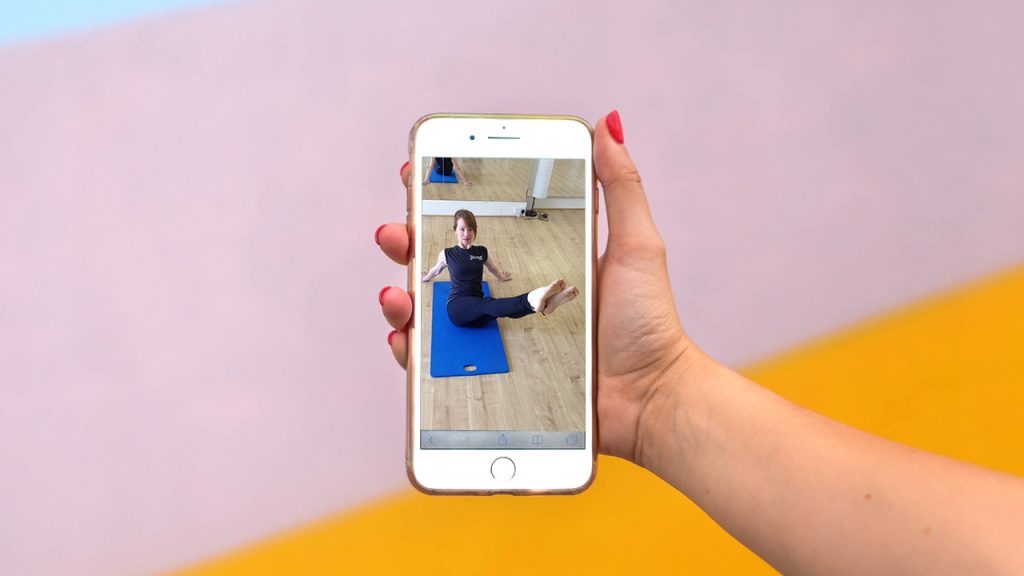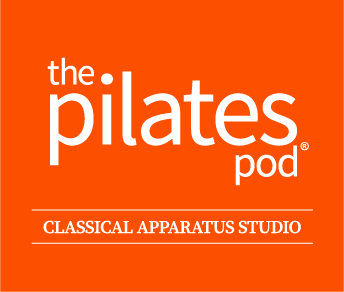
Injuries and Group Classes
If you are living with a serious physical or mental issue or injury that may require more support and attention, we strongly suggest you start with private sessions as group classes are not the best place to address your needs. Taking sessions online or by video is not a replacement for studio teaching with apparatus or working with a teacher in person. We always advise you take 1:1 online sessions if you want specific help for you. Classes are for general level and fitness.
Taking care of your own body
Not all exercises are suitable for everyone. Pilates in group classes is aimed at the generally healthy body, but there are times when you may have a few things going on that need a little more love and attention. Maybe you’ve woken up with a stiff neck, or your lower back is giving you pain or perhaps you are dealing with problematic shoulder.
These acute issues are new and happened recently within the last 3 months. As Pilates teachers, we do not fix and are not medically qualified to rehab the issue or treat it, but instead your session should be adapted to work around the area, to avoid the area and to let it heal itself without extra pressure being added. We recommend, if you are not already, that you seek an Osteopath or Physio for specific help for the area, whilst in Pilates we continue to help the other 99% of your body that is fine and is looking to stay that way.
Working in 1:1
In the Studio with private training, we have thousands of exercises and many pieces of apparatus to choose from to give you hundreds of options that work for you, rather than thinking of leaving things out. Because we are all Classically Fully Comprehensively qualified, our training allows us this knowledge and experience, plus a whole studio of apparatus and thousands of exercises, which opens up a wealth of exercises to choose from.
Matwork is about 7% of the whole Pilates system. Some exercises can be modified , for example if the exercise is round and your modification means you need to work with a flat back, modify it to a flat back if you can. But if this isn’t feasible within the exercise or the exercise looks wildly different to it’s intention, then LEAVE IT OUT!
General guideline protocols for acute issues.
Old, un-diagnosed chronic issues that you’ve been living with or diagnosis with no pain, can often be a result of weak muscles, imbalance, poor body mechanics, pelvic instability and poor posture so we would encourage you to work the body fully.
But for newer acute issues in the last 3 months, show a change in something. Maybe you’ve slept with different pillows or mattress, maybe you’ve started running or lifting weights, maybe you’ve just had a baby or changed trainers. These new changes may appear small and insignificant to you but are often little warnings signs from your body that things have changed and you need to pay attention!
The modifications below are super safe and general modifications we advise you following for your Pilates programme. They may not be forever and also may not be applicable to everyone. But without a medical professional seeing you and passing on their professional feedback as to your issue, we would advise to follow this careful plan.
Bad lower backs– Keep the back flat! no rounding, no extension, no twisting. If diagnosed disc issues, also no seated work. Keep knees bent not straight, Don’t do planks. Avoid inversions. Keep legs close to chest not far away ie legs into chest rather than tabletop or extended. Do lift the head and chest, it allows the back to drop safer into the mat. If you have a diagnosed back disc issue that is still causing you issue, we will be taking care of that within the studio in 1:1’s. Your back care plan will have removed all seated work, twisting, bending, side bending and extension. We then work your body from a flat neutral position and build strength and stability before adding in one movement plane at a time that adds load to the spine progressively. If you know where you are at with this, you can add those movements in. If you know the exercise 10-10-10, Otherwise, we really do suggest you should be doing 1:1’s online.
Sciatica– See bad backs protocol as this comes from your lower back disc compressing the sciatic nerve. If the pain radiates down the leg, also avoid stretching the leg, keep it moving!
Bad necks– head down, neck relaxed on a small rolled up towel. Avoid arching the back of neck or lifting head, or twisting neck. Avoid rolling exercises, inversions upside down. Also see Bad Shoulders protocol as often the neck and shoulders are twinned.
Bad Shoulders– keep arms moving only up down but avoid circles. Lift arms to 90 degrees shoulder height only. Keeps arms in to the side ie avoid elbows wide. Avoid too much weight bearing. Also see Bad Necks, and often the neck and shoulders are twinned.
Bad Knees– avoid pulling on the knees, use your hands behind the knees instead. Work in parallel legs not Pilates stance or internal rotation. Limit your range so knees are not in flexion past 90 degrees. Avoid kneeling or use pads. If you have ACL surgery then also leave out Squats.
Bad Hips– Flexion is good but may be limited to 90 degrees. If recent hip replacement, take extra care here to introduce this. Work in parallel not Pilates stance or internal rotation. Avoid crossing the midline for exercises like one leg circles.
What do I need for the Pod TV video classes?
- It may not necessary to have props for the classes however it can be useful for some. Bring along any hand weights, Pilates circles, flexi bands. But don’t worry, you can use cans of beans/ water bottles, a cushion, and a dressing gown rope/ hand towel.
- For fascia work, we recommend either tennis or lacrosse ball, fascia ball, foam roller, and long rolled up towel or blanket.
- You will need a thick mat or ensure your floor is well cushioned. (Please note that we do not recommend working on a regular yoga mat for rolling exercises which can be too thin and inadequately padded for your spine)
- Ensure your set up is suitable for you to see and hear well without needing to constantly strain the body to watch the screen.
